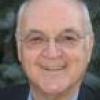
It is not a surprise that the media and most commentators have focused on what was evident to just about everyone present at the University of Notre Dame's Joyce Center for Sunday's graduation ceremonies and to those who subsequently read the full text of President Barack Obama's address to the graduates, their parents and special guests, and the faculty, and through them to the entire nation.
Obama called for achieving some measure of common ground on the highly charged abortion issue. He urged both sides in the debate to engage one another with "open hearts" and "open minds," and always to employ "fair-minded words," acknowledging all the while that "at some level, the views of the two camps are irreconcilable."
The word from the White House before the speech was that Obama would touch upon the abortion issue in his talk, given the controversy that has swirled around the university for weeks, but that he would not dwell upon it nor make it the centerpiece of his remarks. Obama, however, decided to follow the latter course.
What was most significant about Obama's commencement address was not what was obvious to most people, but his singling out of two church figures for special praise — two extraordinary persons who painfully remind us of how far the Catholic church in the United States has fallen from the high standards of leadership that they set.
Obama noted that he had not been raised in "a particularly religious household," but that his mother instilled in him "a sense of service and empathy that eventually led [him] to become a community organizer" to find jobs for the unemployed and to improve schools for every child.
Those with whom he worked represented a broad spectrum of ecumenical and inter-faith traditions — individuals who were inspired by their faith to do many good works. As a result of these contacts, Obama found himself "drawn — not just to the work of the church, but to be in the church. It was through this service," he said, that he "was brought to Christ."
He had high praise for the late Cardinal Joseph Bernardin, who was at the time archbishop of Chicago. He referred to Bernardin as "a kind and good and wise man. A saintly man." He recalled the cardinal's speaking at one of the first organizing meetings that Obama had attended on the South Side.
Bernardin spoke about a whole spectrum of moral issues (a "consistent ethic of life," perhaps), some of which, like abortion, were sources of division in the group. "And yet," Obama observed, "he was congenial and gentle in his persuasion, always trying to bring people together, always trying to find common ground."
Obama noted that just before his death, Bernardin had pointed out, "You can't really get on with preaching the Gospel until you've touched minds and hearts."
The Catholic church in the United States has been bereft of such compelling pastoral leadership ever since Bernardin died in 1996. Were he still alive and in a position of influence in the U.S. hierarchy, some 70 bishops might not have publicly protested, almost in lock-step, against Notre Dame's invitation to Obama.
Fr. Thomas Reese, S.J., former editor-in-chief of America magazine, predicted in his blog for The Washington Post and Newsweek that every round of applause for the President at Notre Dame's Commencement would be a repudiation of those episcopal condemnations. And so it was, loudly and many times over.
The second person whom Obama singled out in his commencement address was Notre Dame's president emeritus, Holy Cross Fr. Theodore Hesburgh.
Noting that it was the 55th anniversary of the historic Brown v. Board of Education decision of the U.S. Supreme Court, which marked only the beginning of the struggle to desegregate the schools and other public facilities, Obama cited the work of Hesburgh and other members of the Civil Rights Commission as paving the way for the Civil Rights Act of 1964.
The commission, originally established by President Dwight Eisenhower, had been comprised of six very different members: two Southern governors, the dean of a Southern law school, one African-American, and Hesburgh.
They worked for two years, Obama recalled, and Eisenhower had to intervene personally because no hotel or restaurant in the South would serve the black and white members of the commission together.
Finally, when they reached an impasse in Louisiana, Hesburgh flew the members to Notre Dame's retreat in Land O'Lakes, Wisconsin, "where they eventually overcame their differences and hammered out a final deal."
"Years later," Obama recounted, "Eisenhower asked Father Ted how on earth he was able to broker an agreement between men of such diverse backgrounds and beliefs. And Father Ted simply said that during their first dinner in Wisconsin, they discovered that they were all fishermen. And so he quickly readied a boat for a twilight trip out on the lake. They fished, and they talked, and they changed the course of history."
It was also Hesburgh who supplied the metaphors that Holy Cross Fr. John Jenkins, Notre Dame's president, and Obama used in their respective defenses of the invitation to speak to the graduates and receive an honorary degree.
A Catholic university, Hesburgh always insisted, is both a lighthouse and a crossroads. As a lighthouse, it "stands apart, shining with the wisdom of the Catholic tradition." As a crossroads, however, it is a place where there is a dialogue between that Catholic tradition and the wider culture, and where the two can "co-exist with friendship, civility, hospitality, and especially love."
The Catholic church does not have that kind of vision and leadership today. Bernardin and Hesburgh had supplied both in abundance. Unfortunately, our current hierarchy does not.
[Fr. Richard P. McBrien is the Crowley-O'Brien Professor of Theology at the University of Notre Dame.]




